These days most of the California population is concerned about water. Are we going to run out? Who is in charge of our water resources? How can we conserve and protect what we have? As for High Trails instructors, we sought to expand our minds and learn more about the the Muncipal Water District, the organization behind managing our local Big Bear Lake. Stay tuned to see what we discovered…

It all started with the Serranos. As most of us outdoor educators know, the Serrano Native Americans were a major early influence on the Big Bear Valley. This is not limited to Big Bear Lake. Before the lake was here, there were marshlands which the Serrano people helped develop and used in their daily lives.
Many years later, after the increase in Western development, dams were created around the marsh to fulfill the irrigation needs of the Inland Empire’s eastern valley. The Bear Valley Dam, created in 1912, was one such dam that ultimately increased the surface area of the lake to an impressive 3,000 acres.
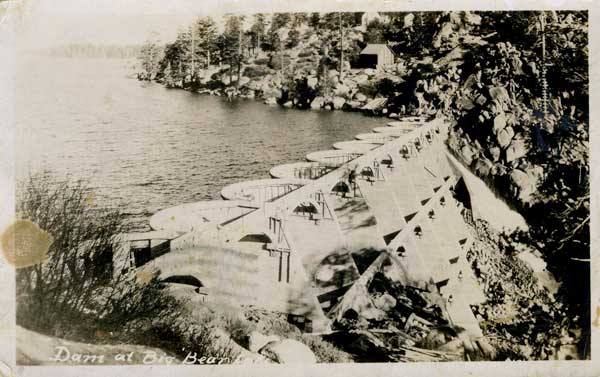
With this increase in surface area came an increase in opportunity for Big Bear and the general public. (Our beloved tourist town had to begin somewhere). Soon there were boaters, fishers, and recreation enthusiasts from Redlands, Los Angeles, and the local area enjoying the opportunities the lake had to offer. As a result, Big Bear became a tourist destination rather than a source of natural resources. Not only did these folks bring an increase in revenue, but these events helped shaped the community into what it is today.
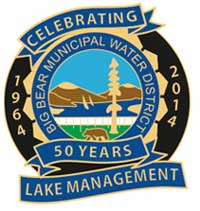 As time went on, tourism combined with various droughts in the 1930’s, 50’s, and 60’s resulted in the community forming the Big Bear Municipal Water District (MWD). This was a great example of the community pulling together to say we want to enjoy this great resource, but we also want to conserve and protect it.
As time went on, tourism combined with various droughts in the 1930’s, 50’s, and 60’s resulted in the community forming the Big Bear Municipal Water District (MWD). This was a great example of the community pulling together to say we want to enjoy this great resource, but we also want to conserve and protect it.
The MWD focuses on various issues that keep the environment and visitors happy. For example, fish stocking and rearing, boat registration, aquatic plant management, watershed management, and invasive species prevention.
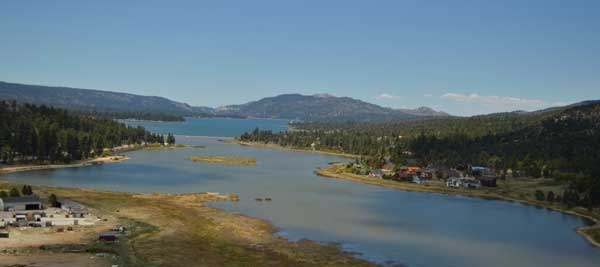 As outdoor educators, we find it essential to tell our 5th and 6th graders what we, as people can do to aid in conserving our resources and earth’s beauty. The MWD is a great local example of doing just this!
As outdoor educators, we find it essential to tell our 5th and 6th graders what we, as people can do to aid in conserving our resources and earth’s beauty. The MWD is a great local example of doing just this!
In addition to learning about the history of the lake and the benefits of the MWD, we learned about lake science (limnology), the big three invasive species (quagga mussels, eurasian milfoil, and carp), and the food web of a pond. All of these are great additions to our plant and water classes here at High Trails.
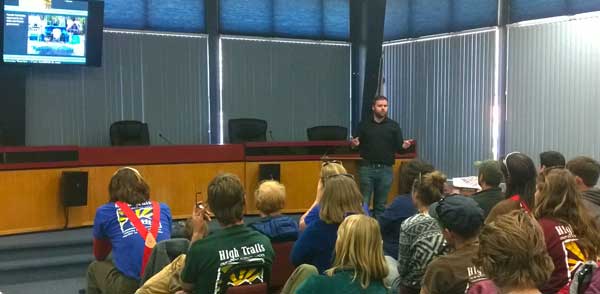 Our presenter James, who works for the MWD, gave some impactful advice on balancing nutrients in the lake and watershed.
Our presenter James, who works for the MWD, gave some impactful advice on balancing nutrients in the lake and watershed.
“You should never feel like you’re fighting the natural environment to keep it healthy. Finding the delicate balance that merges management strategies with the natural life of your aquatic ecosystem and the surrounding land is the best way to achieve sustainability that is both aesthetic and organic.” – James Bellis
 This idea of working with nature to improve our surroundings is something that is feasible for any age group. Ways in which we can do this include protecting local watersheds, forests, and animals. For example, by cultivating the growth of native vegetation, we will reduce fertilizer runoff. Through growing and protecting trees, their roots will help with erosion and foliage will allow more water to percolate into the soil.
This idea of working with nature to improve our surroundings is something that is feasible for any age group. Ways in which we can do this include protecting local watersheds, forests, and animals. For example, by cultivating the growth of native vegetation, we will reduce fertilizer runoff. Through growing and protecting trees, their roots will help with erosion and foliage will allow more water to percolate into the soil.
Animals are just as important to watershed and forest sustainability; by keeping them safe, animals can do their job as gardeners, pollinators, and population control. In turn, the lake, forest, animals, and watershed are all connected and affect one another. This is something we can demonstrate to our students through connecting our classes together and providing them with a unique experience of the forest in which we teach.
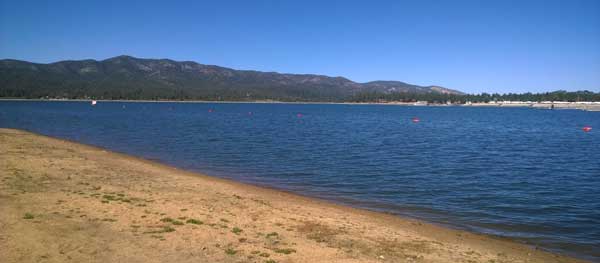 Visiting the MWD was a great way to expand our own knowledge and talk about the ways in which people can make a difference and help their local community, as well as the planet. As teachers, we are constantly learning, and this type of professional development allows us to step outside of ourselves and our traditional realm to see what conserving and protecting the environment really looks like. This is something we can not only incorporate into our classes, but our own community.
Visiting the MWD was a great way to expand our own knowledge and talk about the ways in which people can make a difference and help their local community, as well as the planet. As teachers, we are constantly learning, and this type of professional development allows us to step outside of ourselves and our traditional realm to see what conserving and protecting the environment really looks like. This is something we can not only incorporate into our classes, but our own community.
At High Trails Outdoor Science School, we literally force our instructors to write about elementary outdoor education, teaching outside, learning outside, our dirty classroom (the forest…gosh), environmental science, outdoor science, and all other tree hugging student and kid loving things that keep us engaged, passionate, driven, loving our job, digging our life, and spreading the word to anyone whose attention we can hold for long enough to actually make it through reading this entire sentence. Whew…. www.dirtyclassroom.com

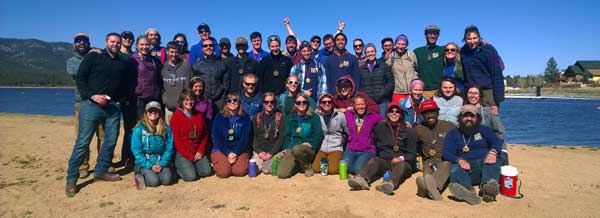
Comments are closed.